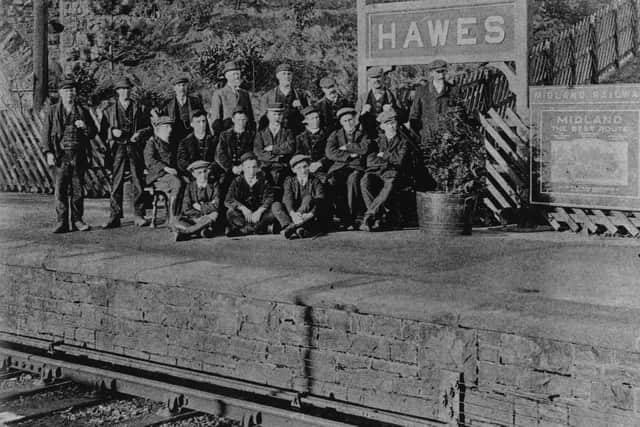Campaigners urge Yorkshire Dales National Park to reinstate Hawes branch line instead of converting it into cycling and walking trail
The Yorkshire Dales National Park Authority is facing calls from transport campaigners to continue backing moves to reinstate the six-mile Hawes to Garsdale line following its officers stating the long-held ambition “now seems very unlikely” due to two recent failed bids for government funding.
A meeting of the authority on Monday will see members consider the principle of creating a multi-user bridleway along the line which was closed in 1959 and launching a study to assess public support for such a scheme.
Advertisement
Hide AdAdvertisement
Hide AdThe old Hawes Station is now the Dales Countryside Museum and the trackbed has always been protected from development, with several railway features remaining.


While the park’s Local Plan specifically supports the reinstatement of a railway along the route, as well as a parallel recreational path, a feasibility study has concluded there is room only for a railway or multi-user route.
The study found the route could draw 15,000 extra visitors to Hawes, generating about £1m of “benefits” annually, but it also uncovered a lack of support from landowners along the route, with seven even refusing to give permission to access their land for the feasibility study.
Ahead of Tuesday’s meeting, Nick Cotton, the park authority’s member champion for recreation management, has highlighted its shared commitment with councils and other local groups to create another family-friendly cycling route in the national park.


Advertisement
Hide AdAdvertisement
Hide AdHe said: “This has a number of advantages, but the main one for me is to allow children and their families to get off a busy road and cycle in a safe and secure environment.”
The proposal has received a mixed reaction, with numerous residents and traders stating it would be a good use of the route, while others have suggested the reasons why the railway line should be restored had recently strengthened.
Upper Wensleydale resident and transport campaigner Ruth Annison, who was instrumental in saving the Settle-Carlisle Railway when it was under threat 33 years ago, has called on the authority’s members to look elsewhere to develop the multi-user trail.
She said: “The case is not only as good as it was before in terms of transport, social, economic and environmental objectives, but it’s stronger. Government policies to get people onto public transport and out of their cars to avoid pollution and other issues are much more in the public domain and discussion than perhaps at any time before.
Advertisement
Hide AdAdvertisement
Hide Ad“Many people have taken it at face value that it is the end of the hope for the restoration of the railway. The railway project is not impossible. It’s a matter of will and determination and long-term planning.”
“I’m incredibly disappointed that the national park, having long protected the route in its Local Plan, has changed tack now.”
Hawes and High Abbotside Parish Council chair Jill McMullon added anything that enhanced the area for tourism should be welcomed, before questioning the level of support in the area for the multi-user route.
She added: “With soaring house prices in the park, I would much rather they looked at ways of keeping the Yorkshire Dales viable for its communities.”
